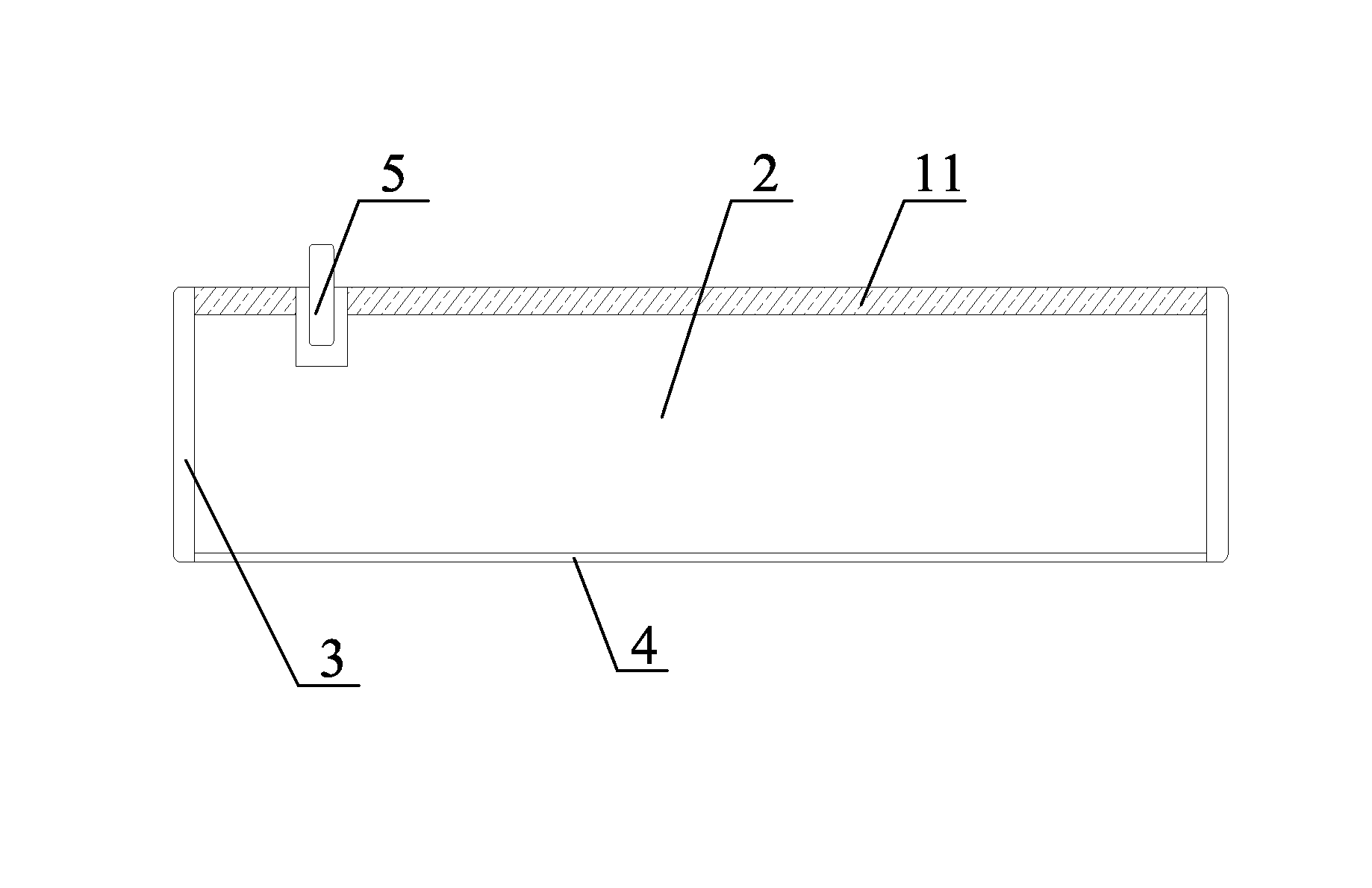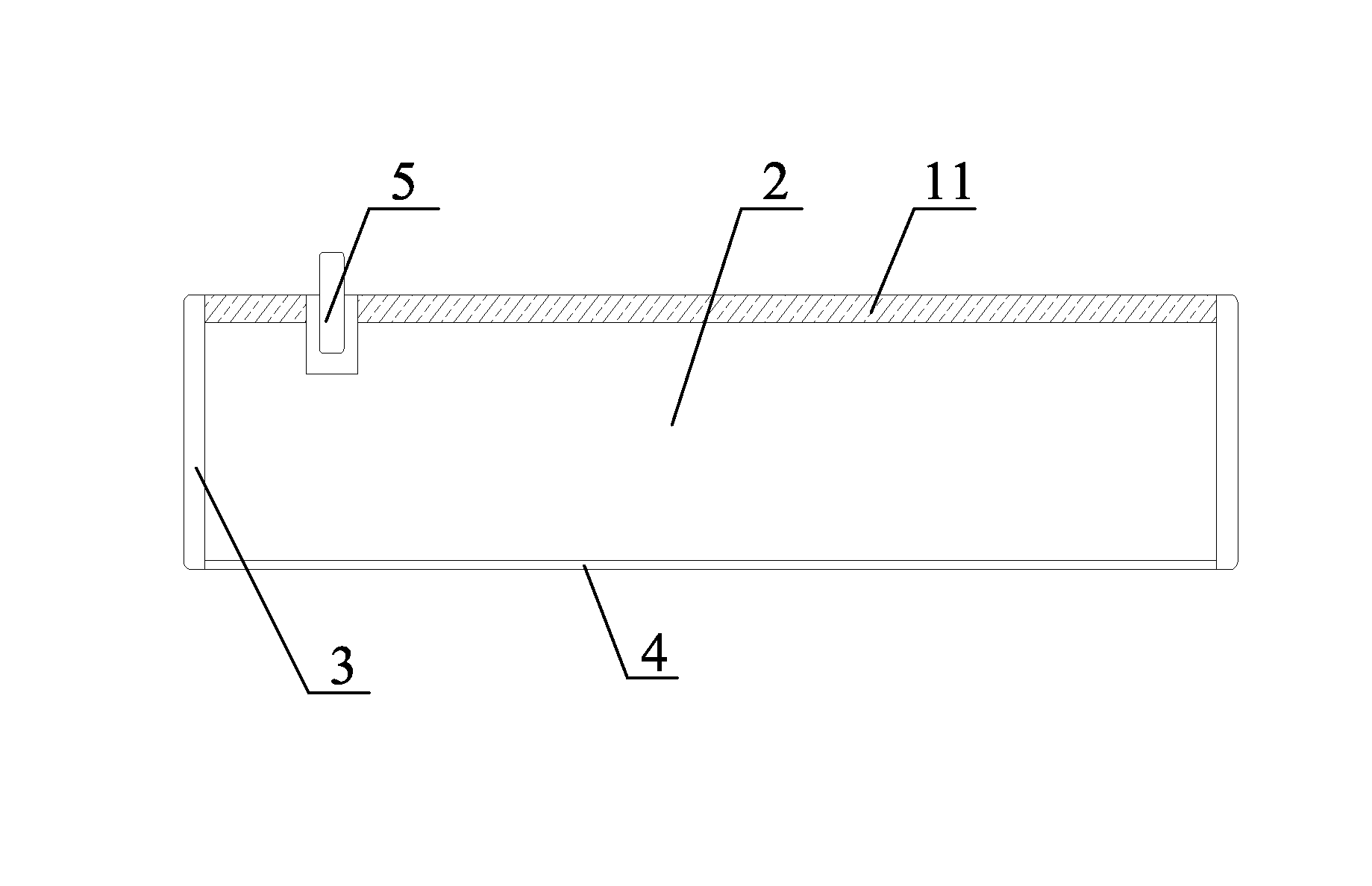Positive electrode material and positive electrode for nickel-zinc secondary battery and method for manufacturing positive electrode
a secondary battery and positive electrode technology, applied in the field of nickelzinc batteries, can solve the problems of only being suitable for use in nickel-cadmium batteries, meeting the demands of large-scale systems, and limiting the use of nickel-cadmium batteries, so as to improve the charging/discharging efficiency of the electrode, reduce the amount of hydrogen evolved, and improve the environmental friendliness of the battery
- Summary
- Abstract
- Description
- Claims
- Application Information
AI Technical Summary
Benefits of technology
Problems solved by technology
Method used
Image
Examples
example 1
[0053]Preparing the positive electrode material having the following components:
[0054]Spherical nickel hydroxide coated with Co3+:68.2 wt %
[0056]Ca(OH)2:0.4 wt %
[0057]Y2O3:0.8 wt %
[0058]CMC glue having a concentration of 0.8 wt %:26 wt %
[0059]PTFE emulsion having a concentration of 60 wt %:0.8 wt %
[0060]The preparing method includes the steps of:
[0061]1. weighing the spherical nickel hydroxide coated with Co3+ according to the above weight percentage, and screening through a 300 mesh sieve once; weighing Ca(OH)2 according to the above weight percentage, and screening through a 80 mesh sieve once; and weighing nickel powder according to the above weight percentage, and screening through a 60 mesh sieve once.
[0062]loading the spherical nickel hydroxide coated with Co3+, Y2O3, Ca(OH)2 and nickel powder by increment into a 75L conical double-spindle powder mixer for mechanical coating and mixing purpose. The motor speed is set at 1.5 rad / s. When the coated m...
example 2-example 4
[0067]The positive electrode material in the three examples is prepared in the same procedure as in example 1, and the components of the positive electrode material are list in table 1 below.
TABLE 1Components of the positive electrode materialExample 2spherical nickel hydroxide coated with Co3+: 68.5 wt %Nickel powder: 3.6 wt %Ca(OH)2: 0.4 wt %Y2O3: 0.7 wt %CMC glue having a concentration of 0.8 wt %: 26 wt %PTFE emulsion having a concentration of 60 wt %: 0.8 wt %Example 3spherical nickel hydroxide coated with Co3+: 68.8 wt %Nickel powder: 3.8 wt %Ca(OH)2: 0.3 wt %Y2O3: 0.9 wt %CMC glue having a concentration of 0.8 wt %: 26 wt %PTFE emulsion having a concentration of 60 wt %: 0.5 wt %Example 4spherical nickel hydroxide coated with Co3+: 68.4 wt %Nickel powder: 3.6 wt %Ca(OH)2: 0.5 wt %Y2O3: 0.7 wt %CMC glue having a concentration of 0.8 wt %: 26 wt %PTFE emulsion having a concentration of 60 wt %: 0.8 wt %
example 5
[0068]1. The foamed nickel base tape is pre-pressed, and passed through a constant-temperature material tank capable of agitating, in which tank the positive electrode material prepared according to example 1 is contained. The slurry of the positive electrode material is uniformly coated on the foamed nickel base tape under constant temperature and continuous agitation. The excessive slurry of the positive electrode material attached on the foamed nickel base tape is removed by a scraper blade.
[0069]2. The coated foamed nickel base tape sequentially passes drying chambers of 78° C., 100° C., and 117° C., so that the dried base tape contains 7%˜9% H2O, ensuring good flexibility of the positive electrode plate, and preventing the positive electrode plate from breaking during coiling.
[0070]3. The foamed porous nickel positive electrode obtained in step 2 is passed through a vertical rolling device for rolling, which has a diameter of 400-500 mm and a length of 500-600 mm, and is provid...
PUM
| Property | Measurement | Unit |
|---|---|---|
| width | aaaaa | aaaaa |
| specific energy | aaaaa | aaaaa |
| temperature | aaaaa | aaaaa |
Abstract
Description
Claims
Application Information
 Login to View More
Login to View More - R&D
- Intellectual Property
- Life Sciences
- Materials
- Tech Scout
- Unparalleled Data Quality
- Higher Quality Content
- 60% Fewer Hallucinations
Browse by: Latest US Patents, China's latest patents, Technical Efficacy Thesaurus, Application Domain, Technology Topic, Popular Technical Reports.
© 2025 PatSnap. All rights reserved.Legal|Privacy policy|Modern Slavery Act Transparency Statement|Sitemap|About US| Contact US: help@patsnap.com


